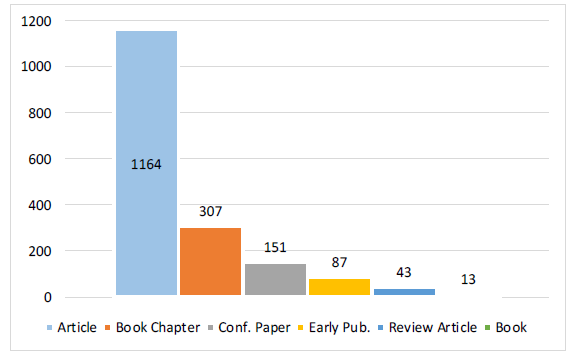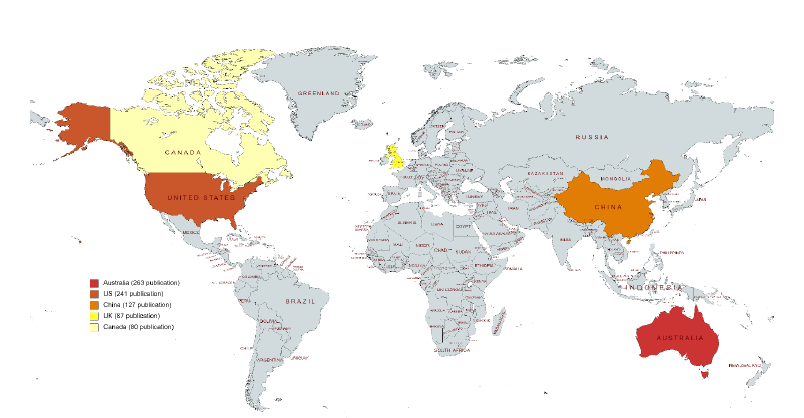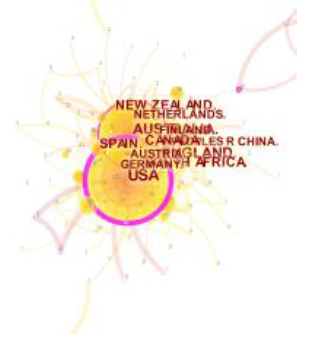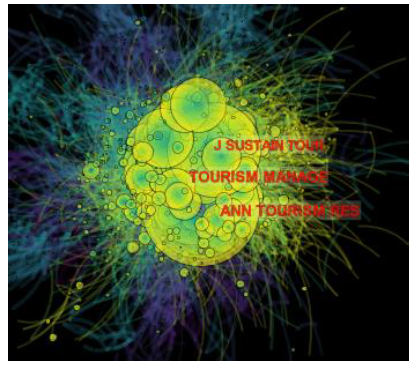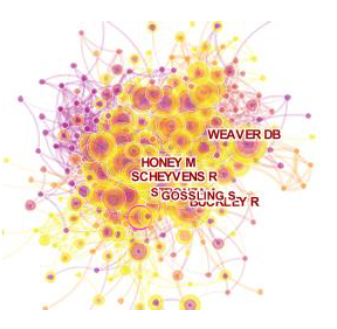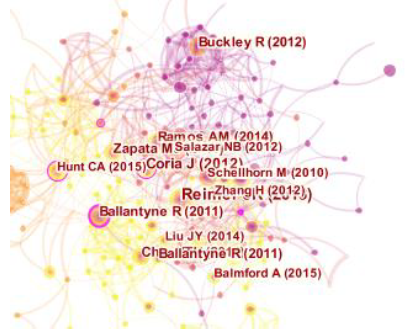1. Introduction
The past 20 years have witnessed an important increase in ecotourism research. Ecotourism as a concept is closely linked to regions that are culturally and environmentally vulnerable (Machnik, 2021). Ecotourism is a concept first explored in 1978 by Kenton Miller (Rahemtulla and Wellstead, 2001). It refers to a safe form of tourism that respects natural and cultural diversity and involves the protection of natural resources (Boeger, 1991). According to Norris (1994), the requisites of ecotourism are the provision of local benefits and the protection of resources. Ecotourism is a type of tourism that protects the environment, improves the well-being of local communities, and includes education (Bjork, 2000). In general, ecotourism is a form of responsible travel to natural areas with an understanding that provides economic benefits to local people and protects the environment (Ecotourism Society, 2020). As awareness of negative phenomena, such as environmental pollution, global warming, climate change, and waste increases, ecotourism is becoming more prominent (Stokes et al., 2015; Maslin, 2013). Due to reasons such as increasing industrialization, rapid urbanization, and the COVID-19 pandemic, tourists are now more likely to participate in ecotourism. In particular, young adults accept and agree that living an environmental-friendly lifestyle is an important goal. Although young adults acquire environmental information from social media tools, they seldom interact or share with those social media posts (Chung et al., 2020). Green message sharing and environmental consciousness contribute to promoting ecotourism (Chang et al, 2022). Therefore, scientific studies on ecotourism have started to increase in recent years. Academically, the ecotourism literature has grown rapidly, especially in recent years, with an annual growth rate of 10-30% (Shasha et al., 2020).
Research on ecotourism in the literature is fragmented, creating gaps and differences in the current understanding of this subject (Khanra et al., 2021). In recent studies related to ecotourism, the relationship between the concept of ecotourism and climate change (Wabnitz et al., 2018; Malek and Robert, 2018), its effects on tourist behaviors (Teeroovengadum, 2019), and the scope, potential, and social effects of ecotourism have been evaluated. Thus, the previous literature was reviewed, and efforts were made to provide a global perspective. However, literature-focused initiatives have not been comprehensive enough given the importance of the subject, and they have remained narrowly focused despite the inherently multidisciplinary nature of ecotourism.
This research was undertaken to examine publications on ecotourism in the Web of Science (WoS) database with bibliometric analysis. Thus, trends in ecotourism studies can be revealed, and suggestions can be made for future research. This study aims to fill the research gap described above through the help of bibliometric analysis. The findings will complement the existing literature and provide a roadmap for future research. With those goals in mind, answers to the following research questions were sought in the present study: What are the research focuses of studies in the field of ecotourism? What is the status of the research in the literature on ecotourism? Finally, what are the topic trends in the research on ecotourism?
2. Literature Review
The gaps identified through bibliometric studies shed light for researchers who want to work on the relevant subject or field so that more high-quality studies can be produced. For this reason, bibliometric studies are important for researchers to gain ideas about particular subjects (Hood and Wilson, 2001). Bibliometric mapping based on scientific data and using quantitative methods visually reveals the overall distribution of information belonging to a certain discipline and its relationship with other types of information. This can help universities, governments, and private institutions make decisions, and it can also assist library managers and journal editors in understanding the relevance of their publications. The main resource in bibliometric mapping is bibliometric data, which includes dense information, such as records of subject titles, publication years, authors, and abstracts (Van Eck, 2011). With bibliometric mapping, developments have been observed in almost all disciplines in the world, especially after 2010 (Ozkose, 2017).
Gokkaya et al. (2017) and Shasha et al. (2020) studied ecotourism with bibliometric analysis. Gokkaya et al. (2017) evaluated ecotourism theses bibliometrically, whereas Shasha (2020) analyzed exclusively ecotourism papers in Science Citation Index Expanded (SCI-E) and Social Science Citation Index (SSCI) journals. Gokkaya et al. (2017) bibliometrically examined 73 graduate theses on ecotourism published in Turkey between 2000 and 2017. According to their findings, theses on ecotourism were mostly in the fields of landscape architecture (22%) and tourism management (15%). For that reason, Gokkaya et al. (2017) described ecotourism as multidisciplinary. Shasha et al. (2020) bibliometrically reviewed 1,771 publications on ecotourism published in the Scopus and WoS databases between 2001 and 2018. They obtained their data by performing scans with the phrases “low-carbon tourism,” “green travel,” and “eco-tourism” and applied a filter for articles in SSCI and SCI-E journals. Moreover, they scanned all relevant areas. When the terms "ecotourism" and "eco-tourism" are scanned in the WoS database’s "Hospitality, Leisure, Sport, and Tourism" section, papers concentrating on ecotourism within the broader topic of tourism are obtained. In this context, a bibliometric analysis of ecotourism research within the broader tourism area is deemed essential.
Hasana et al. (2022) researched ecotourism in protected areas using the bibliometric analysis technique of the data they obtained from the Scopus database. Their results showed that controversial issues surrounding ecotourism and its relationship to protected areas, dominated by climate change, human-wildlife conflicts, and gender issues, particularly attracted researchers’ attention worldwide. Cinbilgel and Ergun (2022) reviewed the existing papers based on ecotourism in the Scopus database. When the number of studies was evaluated, it was determined that most ecotourism research was conducted in the United States, China, Australia, Europe, New Zealand, and South America, and the most cooperation occurred between China and the United States. Junior et al. (2021) aimed to provide an overview of papers on ecotourism in the Pantanal published between 1990 and 2020. The authors that particularly stood out were Alho et al. (2011) with four publications, followed by Hoogesteijn and Hoogesteijn (2017) and Tortato and Izzo (2017) with three publications each. Among the considered journals, Ecological Economics was the only one to publish three relevant articles.
Liu and Li (2020) evaluated research trends in the field of ecotourism, which has attracted considerable attention from both policymakers and researchers as a crucial way to achieve sustainable tourism. Bibliometric analysis was carried out with 2,531 ecotourism-related publications published from 1990 to 2016 obtained by searching the SSCI, Index to Scientific & Technical Proceedings (ISTP), Science Citation Index (SCI), and Arts & Humanities Citation Index (A&HCI) databases. The top three countries for case studies were China, South Africa, and the United States, and the main methodologies were the use of geographic information systems and the contingent valuation method. Singh et al. (2022a) determined the topic trends, collaborations, and intellectual and conceptual structures in the Journal of Ecotourism. Their results revealed that the Journal of Ecotourism made important progress in terms of citations and publications, and its papers were cited in premier journals on tourism. Singh et al. (2022b) also presented a comprehensive overview of the Journal of Human Resources in Hospitality & Tourism in celebration of the journal’s 20th anniversary, applying bibliometric analysis to publications from 2002 to 2020 to highlight the dominant topics and key trends. The results showed the strong growth of the Journal of Human Resources in Hospitality & Tourism over time with huge diversity in publications about human resources practices and issues from around the world, especially from the United States, Turkey, and Australia.
3. Methodology
3.1 Research Population and Sample
To obtain the data to be examined in this study, the WoS database was scanned using the words “ecotourism” and “eco-tourism.” The WoS database is internationally accepted as one of the most widely used and authoritative databases containing an extensive amount of high-quality research publications and citations from around the world (Pu et al., 2022). In the process of scanning the database, the “Hospitality, Leisure, Sport, and Tourism” field was selected for filtering. As a result of scanning after filtering, 1,387 studies published in the field of ecotourism by September 12, 2021, were identified. Scanning was done without year or journal limitations.
3.2 Data Collection Process
The relevant PRISMA flow diagram is shown in Diagram 1. In the PRISMA model, the criteria for the inclusion and exclusion of publications are given. Corrections, notes, letters, and book reviews are not included in the present study. The bibliometric data of the 1,387 selected studies, such as the type of the study, publication year, the language of the study, name(s) of the author(s), study title, keywords, abstract, the study’s country of origin, and bibliography, were downloaded.
3.3 Data Analysis
Bibliometric analyses were conducted using the statistical program CiteSpace V. CiteSpace is a visual analytics software tool that analyzes and visualizes the patterns and trends of scientific literature and patents. It can help users explore and understand the evolution of scientific fields, identify emerging topics and key players, and map knowledge domains. CiteSpace provides interactive visualizations that allow users to explore and understand complex data. CiteSpace maps the development of scientific knowledge and can identify emerging topics and key players (Chen, 2006; Chen et al., 2010). Bibliometrics is an approach for examining the development of a research area by examining the papers carried out in that area (Al, 2012). With bibliometric analyses, roadmaps are presented to researchers regarding features, such as authors, sources, countries, and keywords that guide scientific studies in the field (Aydin, 2014). Bibliometrics is defined as a form of review used to monitor and evaluate the progress of methods, basic/advanced statistical techniques used in disciplines, author links, citations, themes discussed, published studies, and keywords (Koseoglu et al., 2016). In bibliometric research, various findings related to the scientific network are obtained by analyzing the determined features of publications and documents (Al and Costur, 2007). Bibliometric analysis is one of the methods applied by the academy to reveal scientific performance (Zencir and Kozak, 2012).
Network density refers to the display of the level of use of networks that are likely to be used even though their power has not been revealed in a network. The modularity value is a concept that indicates the strength of a network to divide into modules. It is a modularity value that varies between zero and one and has a special meaning according to its size. The mean silhouette value is expected to be between minus one and plus one. This value, which shows the number of clusters, should be higher than 0.7 to show a strong cluster (Al and Dogan, 2012; Li et al., 2017). The degree of centrality is determined by calculating the number of connections that the actor has with other connections. The actor with the most social connection is in the most central position (Sözen, 2009). With the degree of centrality, it is possible to determine to what extent the data in question is in the center in the specified period, while with the frequency, it is seen what number the mentioned data reached in the specified time. Studies on ecotourism were evaluated using the log-likelihood ratio algorithm within the scope of subject trends. Figure 1
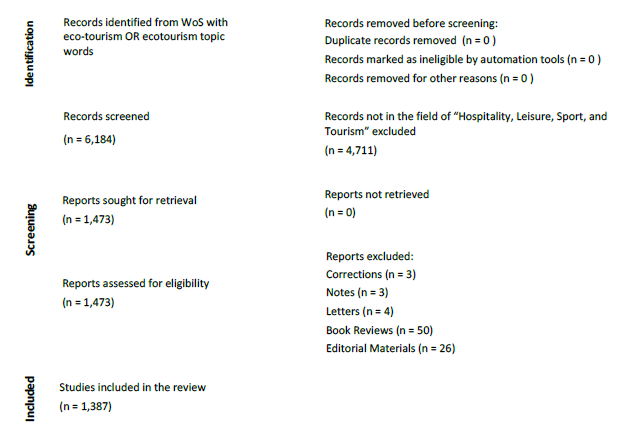
Figure 1 PRISMA Flow Diagram of Research. Source: Prepared by using PRISMA flow diagram (Page et al., 2021).
4. Results
4.1 Distribution of Studies
The distribution of studies by year is shown in Table 1. The first study on ecotourism was published in 1991. A total of 61 studies were published from 1991 to 2002. Since 2005, the number of publications on ecotourism has been increasing. A total of 135 studies on ecotourism were published in 2019, while 132 were published in 2020. In 2021, 114 studies were published as of September 12, 2021. There has been an increasing trend for publications on ecotourism, especially in the last three years. The first article published in 1991 was published in the journal titled Annals of Tourism Research. In that article, Weaver (1991) discussed ecotourism as an alternative to mass tourism in Dominica. In the second article published in 1991, Place (1991) examined ecotourism within the scope of nature tourism and rural development. In 1992, only one article was published, in which Lee and Snepenger (1992) examined ecotourism in Costa Rica.
Table 1 Distribution and percentages of the number of studies by year (total 1,387)
| Years | N | Percentage (%) |
|---|---|---|
| 2021* | 114 | 8,22 |
| 2020 | 132 | 9,52 |
| 2019 | 135 | 9,73 |
| 2018 | 79 | 5,70 |
| 2017 | 97 | 6,99 |
| 2016 | 115 | 8,29 |
| 2015 | 121 | 8,72 |
| 2014 | 55 | 3,97 |
| 2013 | 78 | 5,62 |
| 2012 | 72 | 5,19 |
| 2011 | 73 | 5,26 |
| 2010 | 90 | 6,49 |
| 2009 | 39 | 2,81 |
| 2008 | 48 | 3,46 |
| 2007 | 26 | 1,87 |
| 2006 | 40 | 2,88 |
| 2005 | 6 | 0,42 |
| 2004 | 4 | 0,30 |
| 2003 | 2 | 0,14 |
| 1991-2002 | 61 | 4,40 |
| Total | 1387 | 100 |
Note: *As of 12.09.2021
The distribution of the reviewed papers according to the type of publication is shown in Figure 2. Articles are the most common type of publication on ecotourism (1,164 publications), followed by book chapters (307 publications) and papers (151). The number of books on ecotourism is 13.
The 1,387 studies that were reviewed cited a total of 14,139 sources. In turn, the reviewed ecotourism studies were cited by 25,295 studies. When the citations by authors of their previous works were excluded, the reviewed ecotourism studies received 21,469 citations. The average number of citations per study is 18.24. The H-index for the papers reviewed was 79. Therefore, 79 of the reviewed studies on ecotourism received at least 79 citations. The ten institutions with the most studies on ecotourism are given in Table 2. In descending order, Griffith University, Texas A&M University, and the University of Johannesburg are the top three institutions in terms of publications on ecotourism.
Table 2 Distribution of institutions with the most publications (top 10)
| Institutions | N | Institutions | N |
|---|---|---|---|
| Griffith University | 108 | Otago University | 19 |
| Texas A&M University | 48 | Pennsylvania Commonwealth | 18 |
| Johannesburg University | 32 | Pennsylvania State University | 18 |
| Queensland University | 30 | Waterloo University | 17 |
| James Cook University | 20 | Clemson University | 16 |
The top five journals in terms of the number of reviewed studies published are listed in Table 3. These top three journals are the Journal of Sustainable Tourism (160 publications), Tourism Management (109 publications), and Annals of Tourism Research (80 publications).
Table 3 Distribution of journals with the highest number of articles (top five)
| Journal Name | N |
|---|---|
| Journal of Sustainable Tourism | 160 |
| Tourism Management | 109 |
| Annals of Tourism Research | 80 |
| Ecotourism Book Series | 80 |
| Journal of Ecotourism | 43 |
Regarding the source countries of these studies on ecotourism, the top five countries among a total of 103 are shown in Figure 3. The five countries generating the most publications on ecotourism are Australia (263 publications), the United States (241 publications), China (127 publications), the United Kingdom (87 publications), and Canada (80 publications).
Considering the paper languages of the studies, there are 1,313 publications in English, 56 in Spanish, 10 in Portuguese, three in Chinese, two in Czech, two in French, and one in German. The distribution of studies by index type is shown in Table 4.
Table 4 Index type distribution of studies
| Index Type | N |
|---|---|
| SSCI | 644 |
| BSI-SS | 320 |
| ESCI | 278 |
| CPCI | 158 |
| BCI-S | 7 |
| SCI-E | 4 |
There were 644 indexed studies in the SSCI, 320 in the BCI-SC, and 278 in the ESCI. The total number of examined publications in Table 4 is more than 1,387 since some studies were published by journals included in more than one of these indexes.
4.2 Country Collaborations
Country collaboration analysis is a method of using data and analytics tools to study the collaboration patterns between different countries in a specific field or discipline. This analysis can provide insight into the strength of international collaborations, identify key players and countries in a field, and highlight areas where collaborations may be lacking (Liu et al., 2019). Figure 4 shows which countries are based on the density of publications on ecotourism and the cooperation of countries. Each node represents a country, while the links show the relationships between these countries. The connections between the nodes become thicker in parallel with the increase in the number of connections. As a result of the analysis, a network consisting of 152 nodes and 422 connections was reached, and the density degree was 0.039, modularity was 0.76, and silhouette value was 0.76. It is seen that the network is sufficiently divided into clusters and is close to homogeneous. Results show that there is strong cooperation between the United States, Australia, the United Kingdom, and Canada.
The network values of four countries that have a significant place in the network are shown in Table 5 in detail. Table 5 also provides information on country cooperation and the degree of centrality of countries. Accordingly, it is seen that the United States of America (US) is involved in the most cooperation (n=222). It is seen that the highest degree of centrality (0.42) is in the US. The country with the most cooperation with other countries is the US with 222 publications.
Table 5 Country cooperation and centrality (top five countries)
| Country | F | Year | Cluster # | Country | Centrality | Year | Cluster # |
|---|---|---|---|---|---|---|---|
| US Australia China UK Canada | 222 184 116 60 55 | 1994 2006 2008 2007 2008 | 0 2 1 1 3 | US Australia Canada US Spain | 0.42 0.14 0.11 0.10 0.06 | 1994 2006 1996 2007 2011 | 0 2 5 1 4 |
The values for the top five countries with strong citation bursts are given in Table 6. Australia is the country with the largest citation burst, having a 23.73 citation burst between 1998 and 2013. After Australia is the US, with a citation burst value of 10.22 between 2008 and 2009.
4.3 Journal Co-Citation Network
Journal co-citation analysis is a method used to study the relationship between journals in a specific field or discipline based on the frequency with which they are cited together in academic literature. It provides a visual representation of the relationships between journals, indicating which journals are frequently cited together and therefore may cover similar or related topics (Zhang et al., 2020). A journal co-citation network was applied to determine the journals in which significant papers related to ecotourism were published and the co-cited studies. In Figure 5, the journal co-citation network is presented visually.
The journal co-citation network consists of 1,025 nodes and 7,534 connections. The density degree is 0.014, modularity is 0.48, and silhouette value is 0.77. It is seen that the network is sufficiently divided into clusters and is close to homogeneous. Table 7 shows the first 10 journals that have a significant place in clusters.
Table 7 Top 10 journals with co-citations
| Journal Name | F | Year | Cluster # |
|---|---|---|---|
| Tourism Management | 871 | 1995 | 2 |
| Annals of Tourism Research | 829 | 1991 | 2 |
| Journal of Sustainable Tourism | 616 | 1999 | 2 |
| Journal of Ecotourism | 416 | 2006 | 3 |
| Journal of Travel Research | 345 | 1995 | 2 |
| Current Issues in Tourism | 263 | 2011 | 2 |
| Ecological Economics | 235 | 1999 | 0 |
| Environmental Management | 199 | 1999 | 0 |
| Environmental Conservation | 198 | 1999 | 0 |
| Tourism Geographies | 193 | 2016 | 1 |
It is seen that ecotourism issues are mostly discussed in the Journal of Tourism Management (n=871). Annals of Tourism Research is the second journal (n=829), and the Journal of Sustainable Tourism is the third journal (n=616). It can be said that the relevant journal is the source where key studies on this subject are published.
4.4 Author Co-Citation Network
Author co-citation analysis is a method used to study the relationships between authors based on the frequency with which they are cited together in academic literature. It provides a visual representation of the relationships between authors, indicating which authors frequently collaborate or write on similar or related topics (Yu et al., 2019). The author co-citation analysis is associated with all posts by a particular author per publication, regardless of the total number of authors, meaning that only the first author is considered (Fang et al., 2018). By examining the author co-citation network, it was aimed to determine the researchers who published significant papers on ecotourism and made co-citations to the studies. The network is shown visually in Figure 6.
The network consists of 312 nodes and 1,678 connections. The degree is 0.035, modularity is 0.48, and silhouette value is 0.78. It is seen that the network is sufficiently divided into clusters and is close to homogeneous. The first five authors who have a significant place in clusters are shown in Table 8 according to their citation numbers and their centrality degrees.
Table 8 The number of citations of the first five co-cited authors
| Author | F | Begin | Cluster # | Author | Centrality | Begin | Cluster # |
|---|---|---|---|---|---|---|---|
| Weaver, D.B. | 79 | 2016 | 3 | Mbaiwa, J.E. | 0.11 | 2016 | 4 |
| Buckley, R.C. | 62 | 2016 | 1 | Blamey, R.K. | 0.09 | 2016 | 1 |
| Scheyvens, R. | 61 | 2016 | 0 | Scheyvens, R. | 0.08 | 2016 | 0 |
| Honey, M. | 55 | 2016 | 6 | Mowforth, M. | 0.08 | 2016 | 0 |
| Stronza, A. | 52 | 2016 | 0 | Bramwell, B. | 0.07 | 2016 | 0 |
As can be seen in Table 8, Weaver’s (1991) paper is the most frequently cited paper, with 79 citations in research published on ecotourism and reviewed in this study. Weaver (1991) is followed by Buckley (1994), Scheyvens (1999), Honey (2008), and Stronza and Durham (2008), respectively. By degree of centrality, the most cited and central author is Mbaiwa et al. (2008). The citation burst values of the authors of the ecotourism studies reviewed here are given in Table 9 for the top five authors.
The author with the largest citation burst is Yoon and Uysal (2005), with a burst of 3.03 in 2017-2019. The author with the second largest citation burst is Tsaur et al. (2006), with a burst of 2.89 in 2016-2017.
4.5 Document Co-Citation Network
Document co-citation analysis is a method used to study the relationships between documents based on the frequency with which they are cited together in academic literature. It provides a visual representation of the relationships between documents, indicating which documents are frequently cited together and therefore may cover similar or related topics. Larger nodes represent documents cited by a greater number of different scholars (Zhang et al., 2020). The document co-citation network was taken into account to identify the publications that these ecotourism studies cited jointly. The document co-citation network is depicted visually in Figure 7. It comprises 250 nodes and 930 connections, with a density degree of 0.03, modularity of 0.65, and silhouette value of 0.78. It is seen that the network is sufficiently divided into clusters and is close to homogeneous.
The first five papers that have a significant place in the clusters are shown in Table 10 according to their citation numbers. Reimer and Walter’s (2013) publication is the most frequently cited study on ecotourism. They explored the Cardamom Mountains in southwest Cambodia with a focus on community-based ecotourism. The second most frequently cited study was conducted by Coria and Calfucura (2012), focusing on ecotourism and indigenous community development. The third most frequently cited study was conducted by Ramos and Bruce (2014), focusing on indigenous ecotourism in Palenque’s Mayan rainforest.
Table 10 The number of citations received by the papers (first five papers)
| Author(s) | Citation | Journal | Title | Cluster # |
|---|---|---|---|---|
| Reimer, J.K. and Walter, P. (2013). | 25 | Tourism Management | How do you know it when you see it? Community-based ecotourism in the Cardamom Mountains of southwestern Cambodia | 1 |
| Coria, J. and Calfucura, E. (2012) | 17 | Ecological Economics | Ecotourism and the development of indigenous communities: The good, the bad, and the ugly | 2 |
| Ramos, A.M. and Bruce P. (2014) | 16 | Journal of Sustainable Tourism | Indigenous ecotourism in the Mayan rainforest of Palenque: empowerment issues in sustainable development | 2 |
| Zapata, J.C., Hall, M., Lindo, P. and Vanderschaeghe, M. (2011) | 15 | Current Issues in Tourism | Can community-based tourism contribute to development and poverty alleviation? Lessons from Nicaragua | 3 |
| Chiu, Y.H. Lee, W. and Chen, T.H. (2014) | 15 | Tourism Management | Environmentally responsible behavior in ecotourism: Antecedents and implications | 2 |
4.6 Topic Clusters Related to Ecotourism
With the document common citation network, topic clusters in a particular field can also be identified. A total of 10 topic clusters were identified, and they are given in Table 11. The topic with the most clusters is local value creation. The silhouette value of the local benefit cluster is 0.82. Other clusters include ecotourism intentions, community empowerment, promotion of environmentally friendly behaviors, sea turtle conservation, local value, quantitative literature reviews, nature conservation, management models, and wildlife tourism. These topics may be addressed more extensively in future studies.
Table 11 Topic clusters related to ecotourism
| Topic | LLR p-value | Cluster # | F | Silhouette | Year |
|---|---|---|---|---|---|
| Local value creation | 64, 1.0E-4 | 0 | 38 | 0.82 | 2013 |
| Ecotourism intentions | 47.98, 1.0E-4 | 1 | 37 | 0.80 | 2011 |
| Community empowerment | 48.07, 1.0E-4 | 2 | 34 | 0.81 | 2011 |
| Promotion environmentally behavior | 39.48, 1.0E-4 | 3 | 31 | 0.80 | 2014 |
| Sea turtle protection | 53.53, 1.0E-4 | 4 | 30 | 0.80 | 2012 |
| Local value | 41.55, 1.0E-4 | 5 | 23 | 0.94 | 2011 |
| Quantitative literature review | 20,73, 1.0E-4 | 6 | 15 | 0.99 | 2013 |
| Nature conservation | 32.9, 1.0E-4 | 7 | 11 | 0.91 | 2012 |
| Management models | 42.83, 1.0E-4 | 8 | 11 | 0.96 | 2014 |
| Wildlife tourism | 34.98, 1.0E-4 | 9 | 10 | 0.98 | 2013 |
4.7 Keyword Analysis
A keyword analysis is a process of analyzing and understanding the keywords used in a specific field or discipline to identify the most important topics and trends. It involves extracting keywords from texts and counting their frequency of use to determine their importance. Keyword analyses can be applied to academic literature, patents, or other forms of text to identify emerging trends and hot topics, compare different fields, and understand the language and terminology used in a discipline. The keyword network consists of 477 nodes and 3,065 connections. The density degree is 0.027, modularity is 0.36, and silhouette value is 0.69. It is seen that the network is sufficiently divided into clusters and is close to homogeneous. The first 15 most used keywords that have a significant place in the clusters are shown in Table 12 according to their numbers and centrality degrees.
Table 12 Most frequently used keywords and centrality values
| Keywords | F | Keywords | Centrality |
|---|---|---|---|
| Ecotourism | 380 | Conservation | 0.17 |
| Tourism | 213 | Management | 0.17 |
| Conservation | 175 | Ecotourism | 0.16 |
| Management | 145 | Tourism | 0.15 |
| Effect | 124 | Effect | 0.14 |
| Attitude | 83 | Behavior | 0.13 |
| Perception | 83 | Attitude | 0.10 |
| Society | 79 | National Park | 0.10 |
| Protected area | 64 | Society | 0.08 |
| National Park | 60 | Model | 0.07 |
| Behavior | 58 | Recreation | 0.07 |
| Satisfaction | 55 | Participation | 0.06 |
| Model | 55 | Biodiversity | 0.06 |
| Experience | 53 | Area | 0.05 |
| Participation | 46 | Perception | 0.04 |
The three most frequently used keywords related to ecotourism are “ecotourism” with 380 usages, “tourism” with 213 usages, and “conservation” with 175 usages. These are followed by “management,” “effect,” “attitude,” “perception,” “society,” “protected area,” “national park,” “behavior,” “satisfaction,” “model,” “experience,” and “participation,” respectively.
5. Research Implications
5.1 Discussion
The results of the bibliometric analysis indicate strong cooperation between the United States, Australia, the United Kingdom, and Canada in ecotourism research. The two most productive countries were found to be Australia and the United States according to Singh et al. (2022a). The country cooperation network also shows a medium-level cluster structure as indicated by the statistical values.
Journal co-citation analysis was used to determine the most frequently cited journals and their relative influence in the field of ecotourism (Zhang et al., 2020). The three most cited journals were found to be Tourism Management, Annals of Tourism Research, and Journal of Sustainable Tourism. Liu and Li (2020) concluded that Tourism Management was the most productive journal on the subject based on a bibliometric analysis of ecotourism-themed research conducted between 1990 and 2016. The journal co-citation network also shows a moderate clustering structure according to the average silhouette and modularity values.
Author co-citation analysis was used to identify the relationships between authors and to demonstrate the evolution of the research area and whose publications are cited in the same papers. This analysis not only reveals the distribution of highly cited authors but also helps to determine their influence in the field (Yu et al., 2019). The most cited paper was found to be Weaver’s (1991) paper with 79 citations. The authors cited most frequently in descending order after Weaver (1991) were Buckley (1994), Scheyvens (1999), Honey (2008), and Stronza and Durham (2008).
To further determine the publications that these ecotourism studies cited jointly, a document co-citation network was considered. The most frequently cited study was found to be that of Reimer and Walter (2013), which focused on community-based ecotourism and examined the Cardamom Mountains in southwestern Cambodia.
5.2 Conclusion
Bibliometric techniques can provide a comprehensive overview of the academic literature on ecotourism, including the number of publications, authors, and journals, as well as the countries and institutions that are most active in this field. Ecotourism bibliometrics refers to the study of the literature on ecotourism using bibliometric techniques, such as citation analysis, co-citation analysis, and keyword analysis. This approach can help to understand the evolution and current state of the field of ecotourism, identify key players and trends, and highlight areas for future research (Al, 2008; Law and Cheung, 2008). The findings related to academic/scientific studies published in a certain field can be presented in detail with bibliometric analysis. In this way, the current situation of the relevant field can be determined, and future inferences and suggestions can be presented. In the present study, bibliometric analysis was conducted for academic publications from the WoS database in the research field of ecotourism from 1991 to 2021. We first identified the general distribution of publications, including the trends of publications and citations, the distribution of subjects, productive countries, affiliations, authors, and journals. Studies on ecotourism were most commonly published as articles. Therefore, it is possible to state that publications such as books and book chapters in the relevant field lag behind articles and congress/conference papers in number. Based on this observed shortcoming, it can be suggested to improve the existing literature by making book chapters and book-type publications on ecotourism. In this way, it will be possible to contribute to the literature and deal with all aspects of the subject in more depth and detail. While 1,313 of the considered papers about ecotourism were in English, 56 papers were in Spanish and 10 were in Portuguese. Australia, the United States, and China are the countries that have published the most research on ecotourism. The first relevant article, published in 1991, was published in the Annals of Tourism Research. In that article, Beaver (1991) discussed ecotourism as an alternative to mass tourism in Dominica. In the second article published in 1991, Place (1991) examined ecotourism within the scope of nature tourism and rural development. In 1992, only one article was published; in that article, Lee and Snepenger (1992) examined ecotourism in Costa Rica.
5.3 Recommendation
It was determined that the densest cluster among the ecotourism-related subject clusters was the cluster of local value creation. Other dense clusters were ecotourism intent, community empowerment, the promotion of environmental behaviors, sea turtle conservation, local value, quantitative literature reviews, nature conservation, management models, and wildlife tourism. In this context, it is recommended that future studies on ecotourism focus on issues such as the creation of local benefits, ecotourism intentions, and community empowerment, as well as post-pandemic ecotourism, ecotourism development, and the use of new-generation technologies in ecotourism. It was also determined that the most frequently used keywords related to ecotourism were “ecotourism,” “tourism,” “conservation,” “management,” “impact,” “attitude,” “perception,” “society,” “protected area,” “national park,” “behavior,” “satisfaction,” “model,” “experience,” and “participation.” It can be concluded that publications on these subjects will contribute to the sector and the literature. Studies on ecotourism should be more interdisciplinary. It is necessary to focus on electronic products, the digital age, rural development, increasing the welfare of the local people, and the attitudes of local people toward ecotourism.
Australia, the United States, and China are the countries that publish the most research on ecotourism. Ecotourism has now become an important economic resource for Indonesia and African countries. To develop successful, environmentally friendly, and sustainable ecotourism systems in these regions, it is recommended that ecotourism studies be conducted in these regions. Collaboration with academics in these regions can contribute to the literature, and best practices could be developed for these regions.
5.4 Limitations
The main limitations of this bibliometric study are related to the database and research resources used. The WoS database was used, and no other research resources were consulted. Tourism and ecotourism-related terms such as travel, human transportation, and sustainability may be added to future studies. However, we believe that the publication examples presented here accurately reflect ecotourism research during the study period under review. Future work can be done to analyze narrower research themes in the field of ecotourism. Researchers can use databases such as Scopus, Eric, PubMed, and CNKI to analyze countries’ and journals’ productivity and map collaboration patterns. Many of the studies examining the concept of ecotourism bibliometrically encountered in the present literature review (e.g., Singh et al., 2022b; Liu and Li, 2020; Nordin and Jamal, 2020) seem to be limited to the field of social sciences. It is recommended that ecotourism bibliometric analysis be conducted in other areas, as well. Since studies are constantly updated online, data capture performed within a certain time interval to obtain the results is a limitation of the present research. Another limitation is that only the WoS database was scanned using the words “ecotourism” and “eco-tourism.” While scanning, the “Hospitality, Leisure, Sport, and Tourism” field was selected for filtering. Therefore, other databases could be analyzed bibliometrically, and the results could be compared.













